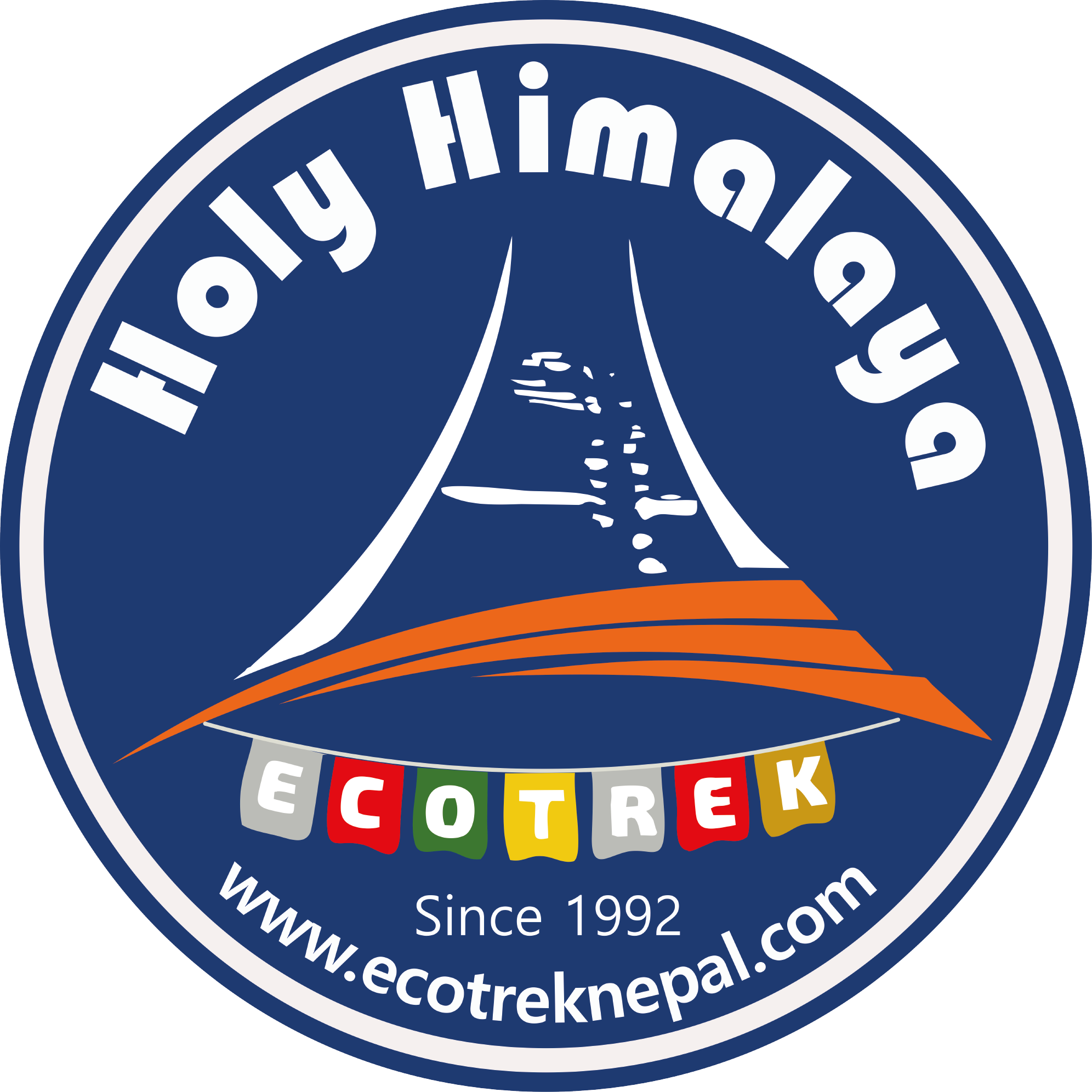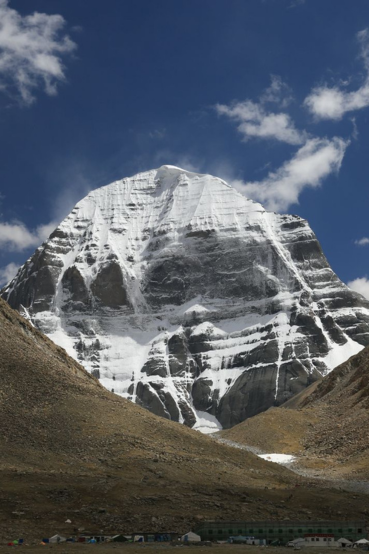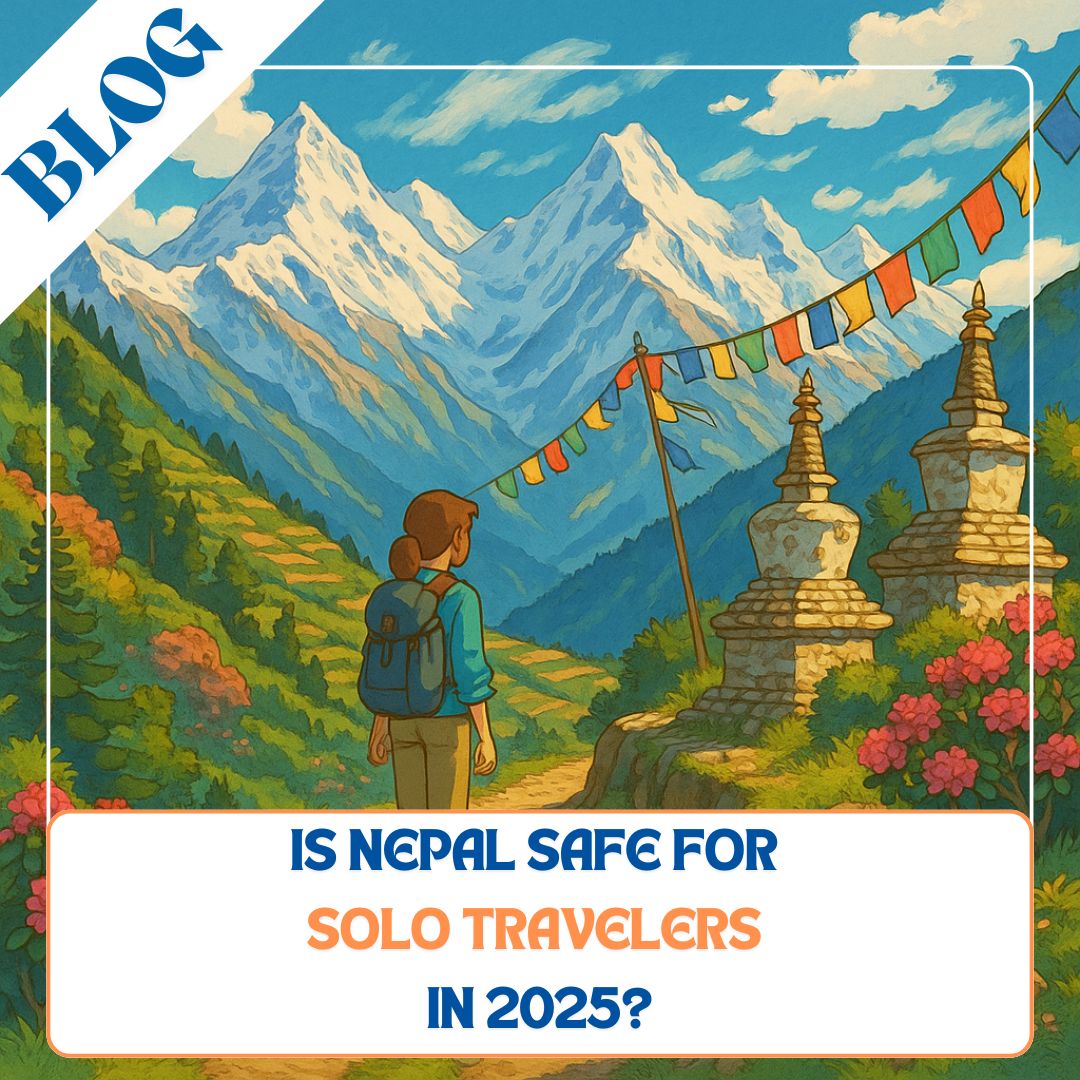Nepal, situated in the heart of the Himalayas, continues to be a magnet for travelers from the globe. With their stunning mountains, holy temples, and excellent cultures, it is the ultimate experience. Single travel has turned into a top trend lately, with adventurers seeking self-enrichment, cultural immersion, and backcountry adventure.

Nepal, with its diverse environment and welcoming people, invites solo trekkers by default. But the most critical question is, is Nepal safe for solo travelers in 2025? This ultimate guide includes all the aspects of solo travel safety in Nepal to help you make a well-informed decision.
General Safety Overview of Nepal (as of 2025)
Nepal in 2025 is stable in peace in most regions. The government of the country functions relatively smoothly, and the tourism sector continues to be one of the best funded and safest industries in the country. Most of the places that are a favorite among tourists are considered safe, and the country is well-positioned on the world safety indexes compared to other nations in South Asia.

Petty crimes such as bag-snatching, pickpocketing, and scams are present in the crowded tourist regions like Thamel (Kathmandu) or Lakeside (Pokhara), but violent crimes are extremely rare.
There is an increase in police patrols in tourist areas, and the Tourist Police unit specifically caters to foreign tourists. They are readily available and have English education. Tourists who are aware, not reckless, and respectful of the customs of the land rarely experience major problems.
Safety for Solo Women Travelers
Nepal is generally safe for solo women travelers, especially in the cities and trekking areas. But one does need to be sensitive to culture. Nepali culture is conservative, and modest clothing is the norm. Long pants, clothed shoulders, and not dressing too revealing are appreciated, particularly in rural or religious areas.
Female travelers need to exercise caution not to travel alone in dark or unfamiliar places in the evening. Public transportation is safe during the day but may be crowded. Many women like to organize private transfers for extended distances.

Female solo travelers' reviews often cite the warm and welcoming attitude of locals. Some guesthouses and hostels have female-only dorms, especially set aside for women travelers. Female guides can also be arranged and can be an added source of security.
Tips for women:
• Wear a headscarf when visiting temples.
• Avoid solo routes while trekking.
• Listen to your intuition and keep in contact with friends or family.
Health and Medical Safety
Nepal has adequate medical facilities in the large cities. Kathmandu and Pokhara have international-standard hospitals and clinics to cater to tourists with English-speaking doctors and nurses. Medical facilities are not available in rural or mountain areas.
Travel vaccinations recommended are hepatitis A and B, typhoid, tetanus, rabies (if trekking), and COVID-19. The first-aid kit should include essentials such as altitude sickness medication, such as Diamox.

Altitude sickness (AMS) remains the most common health risk for trekkers. Anyone of any age or fitness can be affected by it. Acclimatization days, drinking plenty of water, and climbing slowly are all important. Emergency evacuation must be included in travel insurance, especially if going to remote locations.
Natural Hazards and Trekking Safety
Nepal is a country of natural extremes. The 2015 earthquake was a stark reminder of its seismic vulnerability, and while aftershocks have abated, it remains an earthquake-risk zone. Advanced building codes and enhanced infrastructure have contributed to safety nevertheless.
Himalayan weather is uncertain. It can be ruined by sudden snowfall or rains, especially from June to August (monsoon) and between December and February (winter). Always refer to weather forecasts and heed local recommendations.

Solo trekking is no longer permitted in certain regions, such as the Annapurna, Langtang, and Everest areas, following a series of incidents where lost or injured trekkers had to be rescued.
From 2025, it will be mandatory to employ a licensed guide in most national parks and protected areas. Guides not only enhance safety but also provide information on local cultures and logistical support.
Transport and Road Safety
Nepal road travel improves but remains one of the less safe aspects of the trip. The roads are narrow, twisty, and in poor condition, especially through the hill and mountain regions. Traffic laws are not well maintained, and there are frequent on-road accidents.
Public buses are inexpensive but crowded and uncomfortable. For comfort and safety, tourists are advised to travel by private jeeps, tourist buses, or domestic flights. In towns, registered taxis, ride-sharing cars like Pathao, or transport arranged by hotels are safer options.

When taking local flights to remote places like Lukla or Jomsom, be ready for delays due to weather conditions. Go for airlines with a good reputation and safety record.
Connectivity and Communication
It is a simple and affordable matter to stay connected in Nepal. Locally owned telecom companies such as Ncell and NTC provide tourist SIM cards with good urban coverage and reasonable service along major trekking routes. SIM cards are available at the airport or shops for a photocopy of your passport.
Wi-Fi can be found in most city area hotels, cafes, and guesthouses. Trekking area Wi-Fi will be slower and might cost a little but is usually good enough for messaging or checking maps.

A few helpful apps for solo travelers include:
• Maps.me for offline maps
• Tootle and Pathao for rides
• Google Translate
• XE Currency for currency exchange
Local Community and Travel Support
Nepal boasts a strong tourist support network. The Tourist Police are trained to deal with lost articles, conflicts, or other crises and can be reached at 1144. Nepal Tourism Board travel information offices can also be found in major cities.
Independent travelers can look for an active society in Facebook groups like "Backpacking Nepal" or "Nepal Travel Forum." Hostels in cities like Kathmandu and Pokhara have social activities, free city walks, and group hikes where there is every opportunity to mix with other travelers.

All travel agencies offer join-in group treks or city tours to ensure the solo travelers can go out and about without being by themselves.
Money, Scams, and Theft Protection
The local currency is the Nepalese Rupee (NPR), and cash is king in the majority of the country. ATMs are quite common in cities but unreliable in rural regions, so it is best to have enough cash when going to the mountains.

Normal scams include bogus tour guides, too-high taxi prices, and shops charging more to foreigners. Negotiate ahead of time and avoid unlicensed tour guides. Use accommodations and transport services with good online reviews.
Pickpocketing is rare but conceivable in busy tourist areas. Wear a money belt or anti-theft backpack and buy costly electronics or jewelry without wearing them always.
Cultural Behavior and Etiquette Tips
Respecting local culture not only enhances your holiday but also avoids unintentional offense. In Nepal:
• Remove shoes when entering a house or a temple.
• Dress modestly, especially in rural areas and religious sites.
• The left hand is dirty — use the right for giving or receiving.
• Avoid touching people's heads or pointing your feet at others.

• Public displays of affection are frowned upon. Be sensitive to religious traditions, and ask permission before taking photographs, especially of monks or sacred rituals.
• The ability to utter a few words of Nepali, such as "Dhanyabad" (thank you), is always appreciated.
Practical Safety Tips for Independent Travelers in Nepal
When traveling alone in Nepal, the solution to a smooth and secure experience lies in planning. Always purchase extended travel insurance that includes high-altitude trekking, medical evacuations, and trip cancellations.
Registration at your embassy in Kathmandu is a good idea on arrival, as most of them provide very crucial support services such as emergency services or replacement of passports. Carry a list of emergency contacts around, such as the Tourist Police
(call 1144), Ambulance (102), and Fire Brigade (101).

Let someone know your itinerary before leaving each morning, particularly on treks, so that at least one person is aware of your whereabouts.
Also, when trekking in the wilderness, bring important equipment like a charged power bank, water purification tablets, and a good headlamp to be safe and independent on the trail.
Final Verdict: Is Nepal Safe for Solo Travelers in 2025?
All things considered, Nepal remains a safe, enriching, and welcoming destination for solo travelers in 2025. Its natural beauty, spiritual depth, and people's hospitality make it ideal for solo travelers.

Of course, there are risks, as there are everywhere — but a prudent traveler who is also respectful of local culture and takes simple precautions will find Nepal not only safe, but deeply rewarding.








